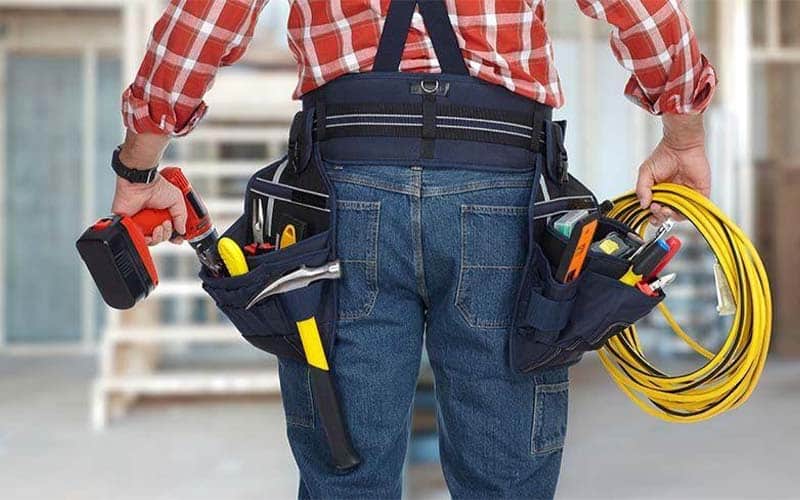How Much Does Google Ads Cost in Australia? [Contractor Google Ads Pricing Guide 2024]

It’s easy to walk into a hardware store and buy new tools. You know exactly how much they cost, and you walk out of the store with some new gear.
Imagine walking into the same hardware store and asking how much new tools cost, only for the bloke at the counter to answer with “it depends, we might only sell these tools to your competition, depending on how much they’re willing to pay us and whether these tools are relevant to the job they’re trying to do”.
That’s what contractor Google Ads pricing is like.
It’s confusing, it’s frustrating, and despite everyone telling you it’s the secret to more work, it feels like you’re slamming your head against a brick wall every time you try to research the Google Ads cost.
So in this guide, we’ll answer the question, “how much does Google Ads cost?” for you.
What to expect in this contractor Google Ads pricing guide
If you’re new to PPC (pay-per-click marketing) you’ve probably got a lot of questions about how it all works and how much Google Ads cost. As a trade, contractor, or home improvement business owner in Australia, there’s a good chance you’ve heard about PPC before but you’re not sure if it’s right for you – and we get that.
Here’s a quick heads up, there’s no specific answer – but we’ll break down the variables that affect how much you will pay, and leave you with some simple tips to save money on your next PPC campaign.
To make this guide easy to digest, we’ve avoided the endless acronyms and buzzwords that make your eyes bleed.
The only important terms we want you to focus on are your Click-Per-Cost (CPC) – this is how much you pay for each ad click. And your Quality Score – this is how relevant your ads are. If you understand those terms, you’re already ahead of most home improvement business owners.
Ready to bring in more work and know exactly how much each lead will cost you? Let’s get into it…
| COST FACTOR | AVERAGE COST |
|---|---|
| Monthly Ad Spend | Minimum $1,000 |
| CPC (Google Search Network) | $1 – $20 per click |
| CPC (Google Display Network) | $1 or less per click |
| Agency Google Ads Management | $750/month and up |
| DIY PPC Management Tools | $150 – $800/month |
Factors that influence Google Ads Pricing in Australia
Google Ads uses an auction model so there’s no singular dollar figure you should be expecting.
Unfortunately, it’s not as simple as budgeting a flat figure per click (but this is actually a good thing, which we’ll explain shortly).
If a keyword used by a potential customer has commercial intent (meaning Google thinks it will lead to a transaction) then an auction occurs.
That means every single keyword is using its own auction, which can result in a cost as low as a few cents, up to a few dollars, or as high as hundreds of dollars (don’t worry, you won’t be paying that much).
The factors that influence your Google Ad costs are:
|
|
Why each of those factors will impact your Google Ads cost
OK, now we’re getting into the good stuff.
To save you time, here’s a quick overview of each factor that influences your PPC ad price, and why it makes a difference.
We’ll cover each of these in detail later on, but if you don’t feel like reading the whole guide, here’s the short and sharp stuff you need to know.
| Your Competition | Your Max Bid | Your Quality Score |
|---|---|---|
| Keyword prices depend on their level of competition. Google Ads is a bidding system, so there are no fixed costs. If the keyword you want is in a highly competitive industry then the bidding war will drive the price up.
On the flipside, keywords with lower competition can be snapped up for much lower prices. |
The amount you’re willing to pay will impact your overall PPC costs because you can price yourself out of the race by bidding too low.
If your max bid doesn’t meet the price of your target keywords, you’re not going to rank. If you want to play, you gotta pay. |
The 800-pound gorilla in the room that way too few tradies take into account.
Your Quality Score is a measure of how relevant your keywords/ads/landing pages are. High relevance can boost your score and help you save up to 50% per ad click…and poor relevance can have you paying 400% more. |
| Your Target Location | Your Target Devices | Your Target Network |
| The locations you target can raise or lower the price of your CPC big time.
If you want to target all of Melbourne you’ll be facing more competition compared to targeting a postcode in Geelong. Targeting the right area helps reduce wasted clicks from people who were never going to hire you. |
Split into desktop, mobile, and tablet; each device comes with its own CPC.
Typically desktop traffic has the highest CPC, but there are plenty of industries where mobile traffic is the most expensive. There’s no hard and fast rule, but the devices you target will influence how much you pay. |
You’re probably most used to seeing paid ads at the top of Google when you search online…but that’s not the only place PPC ads live.
Ads on Google exist on the ‘Google Search Network. You can also display your ads on other people’s websites, which is known as the ‘Google Display Network’. Expect to pay less on the Display Network. |
Google Ads pricing can be $500 a click and up
Alright, by now you know that Google Ads is a live bidding system, meaning certain keywords heat up real fast as businesses compete to rank for them.
That’s why certain keywords can cost $500 and up…PER CLICK.
If the thought of paying $500 bucks for a single ad click scares you, that makes you completely normal. Thankfully, these prices are typically for certain industries only (like insurance, finance, and law) and you won’t be paying close to that amount for trade-related keywords.
The reason we’re sharing these crazy-high prices is to show you there’s a method to the madness. Companies in insurance, finance, and law are willing to pay upwards of $500 per click because earning a new customer will make them waaaay more money than that.
They understand Google Ads is an investment, not a cost.

Always focus on the Return on Investment of Google Ads
If you want to get the most out of your PPC campaign, you’ll need the right perspective.
If you want to become the #1 home improvement business in your area (or a wider area), you can’t make choices based on cutting costs. Sure, outgoing costs are important and you don’t want to be tossing $100 bills out the window, but the focus should be on “will this money help my business bring in new customers?” not “how much money can I avoid spending today?”
The beauty of Google Ads is how quickly those new customers can come in, helping you recover your investment and start making a sweet profit…
You’re not just spending money for the sake of it, but investing in advertising that attracts qualified leads and ‘ready to buy’ customers who choose your home improvement business.
That’s because customers who click on Google Ads are typically using ‘commercial keywords’.
Commercial keywords are a fancy marketing term for phrases that are used before spending money. For example ‘cheap turf laying near me’ or ‘local patio builder prices’. People searching for these keywords are getting near a final decision and the business websites or ads they click on have the hottest chance of securing a sale.
The end result of changing your perspective? You don’t stress about the upfront costs of your ad campaign, because you’re focused on making your Google Ad costs back and generating profit.
How does Google Ads work?
It’s always easier to make decisions about money when you know what’s happening behind the scenes.
Understanding how Google’s unique bidding system works can help you manage your Google Ad costs down the line. So we’ll keep things simple and break the process down step-by-step…
Step #1 – When someone types a keyword into Google, it’s immediately cross-checked to see if any of the words used are being bid on by home improvement businesses.
Step #2 – If a business is bidding on those keywords, the auction begins.
Step #3 – Google will calculate each business’ Ad Rank (this is the position their ad appears in) with a formula that involves multiplying your Max Bid and your Quality Score. If your Max Bid is $5 and your Quality Score is 8, then your Ad Rank is 40.
Step #4 – Whoever has the highest Ad Rank gets the top spot.
Step #5 – Once Google has your Ad Rank, they’ll calculate your click-per-cost (CPC) by factoring in the Ad Rank of the ads below yours and applying a simple formula to leave you with your final CPC.
One-sentence takeaway…
You can end up paying LESS per click by increasing your Quality Score.
How your Quality Score can help you run cheaper PPC campaigns
Every contractor wants to pay less for their marketing, right?
The problem with paying under for SEO or a new website is you usually end up with something crap (if you’ve ever outsourced your SEO to the sub-continent you know this already).
But Google Ads doesn’t run on this logic.
You CAN pay less per ad click without sacrificing results, and that all comes down to your Quality Score. You’re in control of how much you want to spend per click, and your competition might be willing to spend more, but Google Ads isn’t your typical auction system…
It’s not like rocking up to a property auction and snapping up a new place because you had the highest bid. Google does take your max bid into account, but a more important metric for you to worry about is the one we keep hammering home – your Quality Score.
Every single home improvement business using Google Ads is given a Quality Score.
And we get it, this can sound like a buzzword that salesmen throw at you to try and make you sign a contract on the dotted line, but all your Quality Score really means is how relevant you are. So it’s easier to think of it as a ‘Relevance Score’.
Google wants to see keywords matched up with relevant ads and relevant landing pages (your landing page is where your ad directs people too). If you’re running a relevant ad campaign across those core touchpoints, your Quality Score will go up.
Higher Quality Score means lower costs
Yep, Google is so keen to show relevant ads that they’ll reward you with higher rankings AND ask you to pay less per click.
Keep in mind, this isn’t Google being charitable. Their ad revenue was north of $146 BILLION in 2020. The more relevant the ads they show, the more likely people are to click on them. And since 100% of your PPC budget goes to Google, they want to reward relevant ads because it lines their pockets.
The last thing Google wants to do is rank an ad that’s irrelevant and isn’t clicked. For example, let’s say you’re a lawn care specialist. You’re targeting keywords related to laying new turf, but your ad talks about tree lopping, and the page you’re sending people to is about lawn mowing.
There’s no relevance from keyword to ad to a landing page. In this example, your Quality Score would go down, and you could end up having to pay 100% more than your competitors just to compete.
On the flip side, a lawn care business that’s got relevant keywords triggering relevant ads and leading people to relevant landing pages will have a better Quality Score, and they’ll snap up all the leads.
How to improve your Quality Score
We thought you’d be interested in paying less per click – not only does that keep money in your pocket but it widens your profit margins too.
Good thing we’ve already created the ultimate guide to improving your Quality Score (but it’s only for tradies, home improvement businesses, and contractors, sorry).
If you fall into one of those categories, you can start improving your Quality Score right now.
How to figure out how much a keyword costs
Unlike SEO or building a website where you can get quotes from $5 to $5,000, Google Ads is a more controlled environment.
Sure, your costs will vary depending on your competition. But since Google is the one controlling the PPC platform you’re using (there are other PPC platforms like Bing and Facebook, but for the sake of this guide we’re only talking about Google) you won’t see the crazy spikes in costs as you do with SEO and websites.
In fact, you can check how much your target keywords cost right now by logging into your Google Ads account – which you can create for free with an email address and a website for your business.
Once you’re logged in just follow these simple steps:
- Click on the Keyword Planner Tool
- Enter an industry term or keyword
- Check out the “suggested bid” column for a rough estimate of the cost
Keep in mind, this “suggested bid” is calculated by comparing the current trade businesses bidding on those keywords and coming up with an average. The amount you pay for those keywords can vary, especially when factoring in your Quality Score (which you know is an absolute game-changer now).
But overall, this is a good indication of what your own PPC campaign will cost per click.
“Can I save money but still go after expensive keywords?”
We get it.
It’s easy to look at a keyword and see a CPC of $5, or $10 and think “I’m going to go broke paying this much for a single ad click”.
This ends up scaring away plenty of tradies who think they’re getting better value by spending a few hundred bucks printing letterbox flyers or paying a bloke on Fiverr to handle their SEO, even though his account is full of poor grammar and errors.
Average figures are easy to throw around, but at the end of the day, they’re just averages.
The bulk of all searches on Google are what’s known as ‘long tail keywords’. These phrases – usually 3, 4, or more words – are more specific and niche than the broad keywords that get thrown around when talking about PPC for trade businesses.
For example, the keyword ‘exterminator’ has a CPC somewhere north of $40. That’s damn expensive.
But the long tail keyword ‘fire ant control services’ comes in significantly cheaper at a handful of dollars. There’s no reason to target the broad, expensive keywords when you can narrow your keywords, target people in your local area with specific problems, and bring your CPC down.
When you’re setting up your own Google Ads campaign – or speaking to a professional to help you do it, make sure you take long-tail keywords into account. These keywords are cheaper and often come with greater commercial intent which will help YOU land a new customer.
Simple Google Keyword Planner tips
For a super-simple approach to gauging potential costs, you can Google your industry to find the average cost-per-click (CPC) for your keywords.
For example:
- Automotive Industry = $5.26 per click
- Homebuilders = $7.69 per click
- Garden and lawn care = $3.79
That’s not to say you should expect to pay exactly these amounts, because by now you know there are a few important variables that impact your cost-per-click – the most important being your Quality Score (we’re not sorry about going on about it, it’s THAT important to a successful PPC campaign).
How to influence the Google Ads cost?
Google Ads offers plenty of customisation options to tweak who you’re targeting – and all of these impact the price you pay.
If you want to target a tiny town somewhere in Wyoming you’ll face less competition compared to targeting New York, so the location can bring costs up or down.
The devices you target also impact your CPC.
Let’s face it, people use their phones as much as a laptop or computer to search for trade businesses. Over 52% of traffic comes from smartphones so there’s a good chance you’re on your phone right now.
To effectively target users at different touchpoints, you can split your ads between:
- Desktops
- Mobile Phones
- Tablets
Each of these devices will have its own CPC. That means you might be able to save money by targeting mobile traffic, while other keywords will bring sky-high costs on mobile – like ‘emergency tow truck’ which would be searched on the go a lot more than on a desktop computer in someone’s home.
How much does it cost to get on the first page of Google?
This depends on the keyword you’re targeting (which makes Google Ads pricing so tough to nail down).
But since you know how to find the average CPC for your industry’s keywords (whether through a Google search or checking out your Keyword Planner Tool) you can figure out the average cost pretty easily on your own.
As a rule of thumb, if you want to rank on Google in the top 3 paid ad spots, you’ll need to pay more than your competition.
So if you’ve found an average CPC for the keywords you want to target, we recommend bidding an extra 30% to 50% to give yourself the best chance of securing a position. You won’t have to pay this higher price forever, but you can adjust your bid and play around with your spending to see what impact it has on your rankings.
How to automate your Google Ads campaign
Google Ads can be a manual or automatic platform.
If you’re only targeting a handful of keywords you can absolutely manage the whole campaign yourself, check in on your rankings, tweak your bid, the whole nine yards.
But if you’re serious about getting more leads through paid ads, you could easily have hundreds (or even thousands) of keywords in your sights.
If that’s the case, you’ve got two options:
- MANUAL: You set the maximum bid and Google takes care of the rest. But if your max bid is too low, you could end up without ranking and without any clicks.
- AUTOMATIC: You let Google automate your max bid. This stops you from having to manually tweak 500 different keywords and helps you reach profitability without wasting your time.

The benefit of running a PPC campaign on Google
In short, because the potential to grow your business is off the charts.
Google loves to float the stat that businesses receive $8 for every $1 they invest in Google Ads, which sounds like a pretty good deal. Of course, every business is different and your success will come down to your ability to boost your Quality Score and manage an agile PPC campaign that changes to meet the circumstances – whether that’s tweaking who you’re targeting, where you’re targeting them, and what other businesses you go up against.
If you’re on the fence about running your own PPC campaign – or paying a PPC agency to do it for you, here are a few proven benefits to your trade business.
| In control of your budget | Scale up or down |
|---|---|
| Google Ads blows other advertising strategies out of the water when it comes to controlling your spending.
You set a daily (or monthly) limit and you won’t go over that amount. In fact, you can end up spending LESS than your Max Bid each day if your Quality Score is awesome. |
Other advertising channels, like SEO, are about the long game. This makes it hard to see if strategies need tweaking on the go.
Google Ads happen in real-time. You can be ranking in the #1 spot within 48 hours, and if the leads are pouring in you can up your spend (or lower it) any time, for instant results. |
| Data for days | High-Quality Leads |
| Hopefully, you like numbers because a PPC campaign delivers so much data for you to use.
See who clicked on your ads, when they clicked it, whether they converted – all the juicy info that helps you tweak a PPC campaign to deliver better results. |
If you’ve ever posted on Facebook or handed out flyers, you’ll know the quality of leads can be, well…crap.
People who take the time to click on Google Ads aren’t mucking around. They have a problem, and they want a solution, otherwise, why would they waste their time clicking? |
Management fees if you’re partnering with an agency
If a homeowner wanted to build a shed in the backyard they’d have to factor in the costs of the timber and any other materials needed, but that price isn’t the whole story. Hiring a carpenter, builder, or handyman to come in and stand the shed up for them is going to incur extra costs too.
You can manage your own PPC campaign, but as far as marketing strategies are concerned this is one of the more complex animals.
If you choose to bring on an agency to manage your campaign for you, that’s another cost to keep in mind. This approach offers several key benefits to doing the work yourself – most importantly, results.
Anyone *can* demo their kitchen and have a crack at a remodel, but that doesn’t guarantee results. Bringing on board the pros tends to leave you with more benefits down the line, even if it costs a little more today.
In the case of the new kitchen, you pay today to bring in an expert team and you end up with an awesome kitchen that increases the value of your home. And when we talk about Google Ads, an agency can help deliver results that bring in more clicks and calls, so you make your money back and turn a profit on top.
Agency fees typically fall into one of two categories:
- Fixed PPC fees = you know exactly what’s coming out of your bank account each month
- Percentage PPC fees = you pay a percentage of your overall advertising budget, typically 10%
A quick recap for time-poor contractors
We’ve packed a lot of info into this guide so if you’ve scrolled to the bottom for a bite-sized version we get it.
Google Ads is constantly talked about as the fast and affordable way of bringing in new leads and customers, and that’s true – if you tick off a few CRUCIAL steps along the way.
So here’s the takeaway you need:
- ROI (return on investment) is always a better outlook than cost. Don’t focus on what you’re spending, but what revenue your ads are going to generate back for you.
- Google Ads is an auction system, but it’s not about bidding the most. You do need to set a max bid, but the more important metric is your Quality Score.
- You’re in control of your Quality Score, and by improving it you can pay less per ad click, and enjoy higher ad rankings.
- You can pay less by playing around with your campaign. Different devices cost more or less, different locations cost more or less, and long-tail keywords can help bring ‘ready to buy’ customers at a cheaper CPC because there’s less competition for those niche keywords.
At the end of the day, Google Ads doesn’t need to be complex. People go to Google because they have problems. By typing in keywords they’re looking for a *specific* solution to those problems…
If your ads and landing pages provide helpful, valuable solutions then you’re already halfway there. And if you can convince a prospect that YOU’RE the solution to their biggest problem, paying $1, $5, or $10 a click is worth it if those leads are turning into customers and putting hundreds, or thousands, in your bank account.
Looking to grow your tradesperson, home improvement, or contractor business?
Apply now to see if you’re eligible to work with Tradie Digital.











